The first results of the 2016 Census of Population and Housing, released by the Australian Bureau of Statistics today, show Aboriginal and Torres Strait Islander peoples represent 2.8 per cent of the population, up from 2.5 per cent in 2011, and 2.3 per cent in 2006.
The total population of Aboriginal and Torres Strait Islander peoples counted in the Census is 649,200.
Of this figure, 91 per cent identify as Aboriginal, five per cent were Torres Strait Islander and 4.1 per cent reported being of both Aboriginal and Torres Strait Islander origin.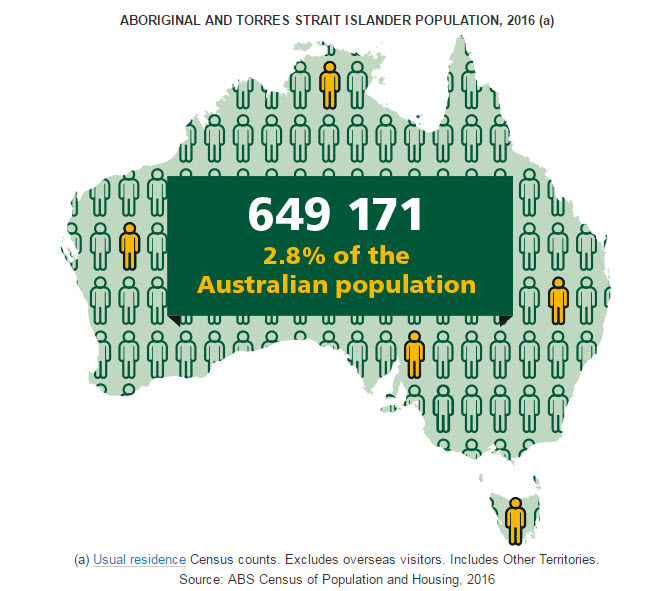 Nicholas Biddle, from the ANU Research of Social Sciences, says the growth of the Aboriginal and Torres Strait Islander population is welcoming.
Nicholas Biddle, from the ANU Research of Social Sciences, says the growth of the Aboriginal and Torres Strait Islander population is welcoming.

Source: Australian Bureau of Statistics
"What we think we see is an increasing number of people who previously didn't identify as being Indigenous who are now identifying as being Indigenous. Which is fantastic, to the extent that people are now comfortable identifying as such," he said.
Director of Census 2016, Sue Taylor, says there are a number of reasons why we have seen an increase.
"One of the thingd we've looked at is the increase of the identification of Aboriginal and Torres Strait Islander people and that's well documented now, that's happened in a number of censuses," she said.
"We also think we're getting better at engaging with Aboriginal and Torres Strait Islander people and enumerated them across Australia and allowing themselves to be enumerated too, so it is a mixture of a few things."
NSW home to most Indigenous peoples
The data reveals that while the Northern Territory has the highest proportion of Indigenous Peoples, New South Wales is home to the highest number, with more than 216,000 people of Aboriginal and Torres Strait Islander origin.
In 2016, over 60 per cent of Indigenous peoples lived in New South Wales and Queensland.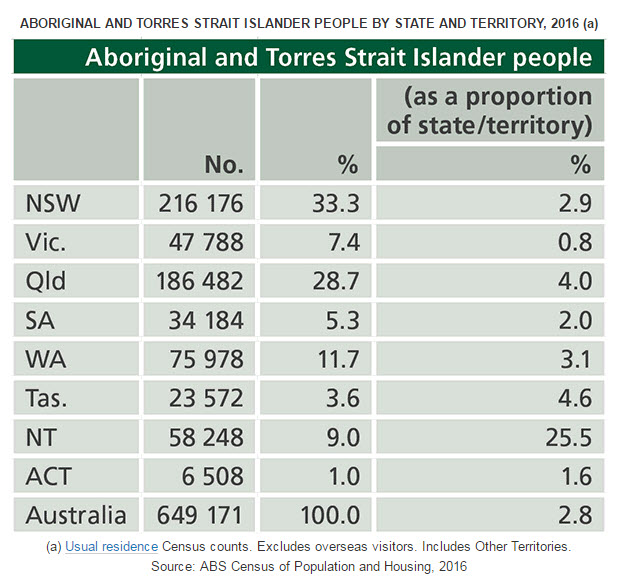 Over a third of Aboriginal and Torres Strait Islander people live in capital cities, with Sydney and Brisbane with the highest populations.
Over a third of Aboriginal and Torres Strait Islander people live in capital cities, with Sydney and Brisbane with the highest populations.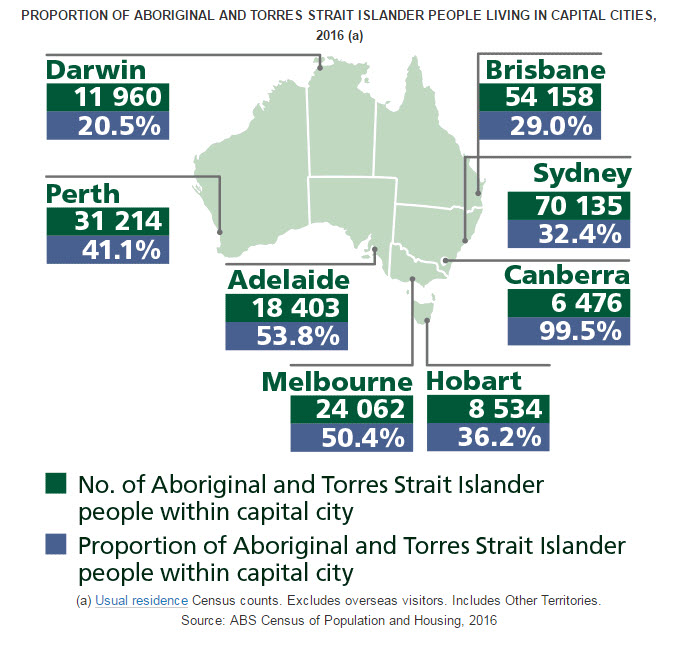

Source: Australian Bureau of Statistics

Source: Australian Bureau of Statistics
Youngest Australians
First Australians are also one of the youngest populations in the nation, with a median age of 23 years in 2016. This is substantially younger than the median age for non-Indigenous Australians, who had a median age of 38 years in 2016.
However, the median age for Aboriginal and Torres Strait Islander people has been on the rise. In 1996, the median age was 20, this increased to 21 in 2011, and increased again to 23 years five years later in 2016.
Aboriginal and Torres Strait Islander people continue to have a younger profile than the non-Indigenous population. In 2016, more than half (53%) of Indigenous Australians were aged under 25 years, for non-Indigenous Australians almost in three (31%) were aged under 25.
Aboriginal and Torres Strait Islander peoples also live a proportionally shorter life than non-Indigenous Australians. The proportion of Indigenous Australians aged 65 years and over was considerably smaller than for non-Indigenous people - 4.8% compared to 16%.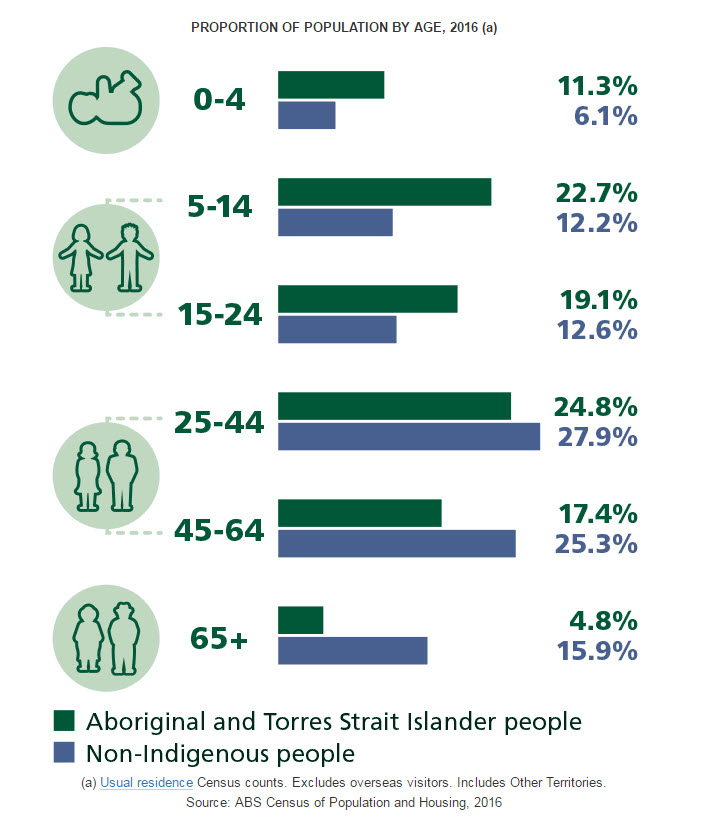

Source: Australian Bureau of Statistics
Language
One in ten Aboriginal and Torres Strait Islander people reported speaking an Australian Indigenous language at home in the 2016 Census. A total of 150 Australian Indigenous languages were spoken in homes in 2016, reflecting the linguistic diversity of Australia’s Aboriginal and Torres Strait Islander population.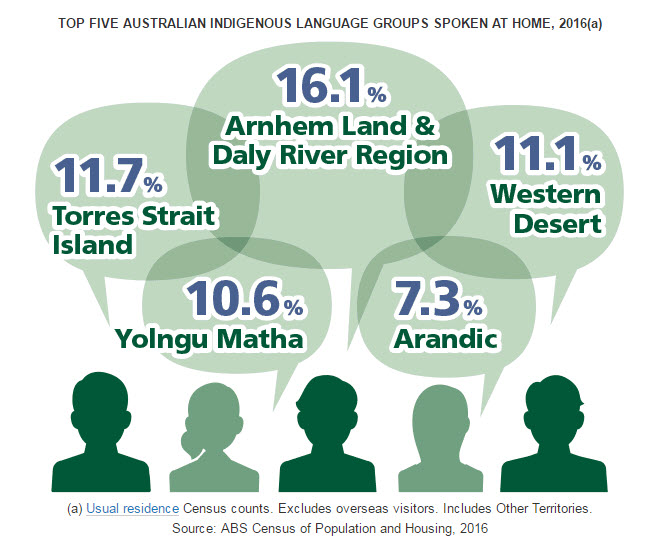

Source: Australian Bureau of Statistics
Income
Aboriginal and Torres Strait Islander peoples are now earning more since the last Census in 2011, with the median weekly household income increased to $1,203 from $991.
Education
More Indigenous students are completing Year 12 or its equivalent. Aboriginal and Torres Strait Islander people aged 20 to 24 years finished Year 12 has increased by more than a third in the past five years from 37 per cent to 47 per cent.
Australian Statistician David W. Kalisch said Census data is high quality, thanks to the participation of Australians.
“The Independent Assurance Panel I established to provide extra assurance and transparency of Census data quality concluded that the 2016 Census data can be used with confidence,” Mr Kalisch said.
“The 2016 Census had a response rate of 95.1 per cent and a net undercount of 1.0 per cent. This is a quality result, comparable to both previous Australian Censuses and Censuses in other countries, such as New Zealand, Canada, and the United Kingdom."
- With ABS

